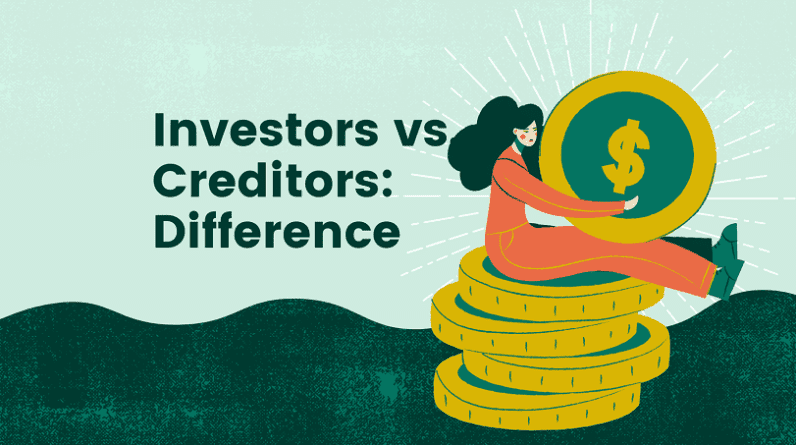
When companies need to raise funds for growth, operations, or pivots, they often turn to outside investors and creditors. But while both provide necessary capital, investors and creditors play very different roles with distinct priorities and expectations.
In this article, we’ll dig into the key differences between investors and creditors using real-world examples. Understanding these distinctions is crucial whether you’re launching a startup seeking funding or optimizing an established company’s capital structure.
What Exactly Are Investors?
Investors provide capital to companies by purchasing equity or shares, becoming partial owners. For example, venture capital firms like Andreessen Horowitz commonly invest in emerging startups by acquiring equity stakes.
By investing in stock rather than lending, investors’ returns stem from:
Share price appreciation if the company’s valuation rises. For instance, early investors in Uber or Airbnb saw massive returns as the share prices skyrocketed.
Dividend payments if management opts to distribute a portion of profits. Apple and Microsoft are well known for issuing dividends.
Investors aim for their share value to grow over time as the company succeeds. Returns can be sizable if the stock performs exceptionally well.” However, investors also risk losing their entire capital investment if the company fails. There are no guarantees on returns or getting their principal back.
What Exactly Are Creditors?
Creditors provide capital by lending money to companies in return for interest payments. The terms are detailed in contracts like loan agreements or bonds. For example, banks often lend money to small businesses via term loans or lines of credit.
By lending rather than acquiring equity, creditors do not gain an ownership stake. However, they take on less risk because the original loaned principal amount must be repaid per the set contractual terms. Interest payments are also usually guaranteed as long as the organization remains solvent.
Creditors earn fixed interest rates on debt. While less risky overall than equity, potential returns for creditors are lower than returns investors may realize from share price appreciation.
Major Differences Between Investors and Creditors
There are several key ways investors and creditors differ:
Capital Type: Investors acquire equity while creditors provide debt financing.
Risk vs. Return: Investors face unlimited upside but also risk losing all capital. Creditors earn fixed returns with less risk.
Time Horizon: Creditor loans eventually have to be repaid while investors want long-term growth.
Control: Creditors have no control or voting rights while investors often gain board representation.
Priorities: Creditors want assets to cover debts while investors want profits maximized.
Investors
Creditors
Acquire equity/shares
Provide debt financing
Higher risk, higher returns
Lower risk, fixed returns
Seek long-term growth
Loans eventually repaid
Gain board representation
No control or voting rights
Want profits maximized
Want assets to cover debts
Leaders must balance these considerations when appealing to investors versus creditors. Having transparency and communicating priorities helps align everyone’s interests.
Impacts on Organizational Management
Clearly understanding the unique roles of investors and creditors is vital when raising capital and managing company finances. Recognizing their different priorities allows organizations to optimize funding and performance.







